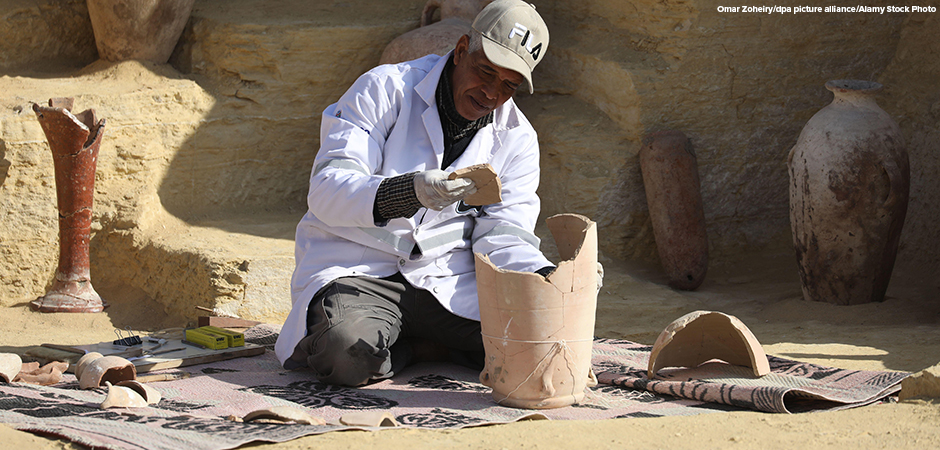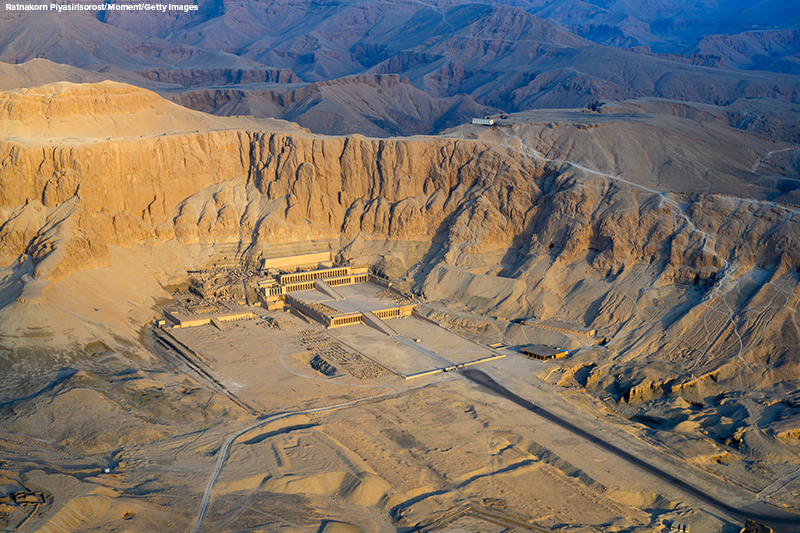
This fall, archaeologists from Egypt, Germany, and the United States made an astonishing discovery: a 4,000-year-old tomb on the banks of the Nile River in Egypt. Here, btw takes a closer look at why this discovery is so special, what the tomb contained, and what this could mean for Egypt’s tourism industry.
The Discovery
Egypt is famous for its mummies, tombs, and pyramids. But this recent discovery is unique for several reasons. First, at about 4,000 years old, it is the first Middle Kingdom tomb ever found in the area. Egypt’s Middle Kingdom lasted from 1938 BCE to 1630 BCE. The Middle Kingdom period included Egypt’s 12th Dynasty into the beginning of the 13th Dynasty. Much is known about the Old Kingdom, which is when many of the pyramids were built. And the later New Kingdom gets a lot of attention for its famous leaders, such as King Tutankhamun and Ramesses II. But until now, less was known about the archaeological history of the Middle Kingdom period.
The tomb is also unique because it contains the remains of five women, two men, and three children. This means that it was likely a family tomb used for several generations.
What Was in the Tomb?
The tomb was discovered in South Asasif, near Luxor and the Temple of Hatshepsut in Upper Egypt’s Western Assiut Mountain, on the West Bank of the Nile River. It contained eleven sealed burials. Scientists believe that the tomb belonged to Edi, who was the daughter of Jifai-Hapi. Jifai-Hapi was the provincial governor of Assiut from 1961 to 1917 BCE. The discovery of Edi’s tomb was made while archaeologists were excavating the tomb of Jifai-Hapi. From Edi’s remains, they were able to learn that she likely died before the age of 40 and had a congenital foot defect.

As you can imagine, not everything inside the tomb was able to survive intact for 4,000 years. Many of the wooden coffins and linen wrappings inside were destroyed by ancient floods. Other artifacts were ruined by ancient looting. But many important artifacts did survive. Several coffins for men, women, and children were found still intact. These were intricately painted with ancient words describing the journey to the afterlife. Inside the coffins, scientists discovered many more treasures, such as finely-crafted necklaces and bracelets; two copper mirrors; stone figurines; pieces of jars; an offering tray; and wooden statues. Perhaps one of the most unique discoveries was one of the necklaces, which contained thirty amethyst beads, two cylindrical agate beads, and a hippo-head amulet. One of the copper mirrors was decorated with a unique design of Hathor, goddess of the sky, women, fertility, and love. And the offering tray was carved with images such as a bull’s head and a loaf of bread. All of these discoveries help to show the strong artistic work of Egypt’s Middle Kingdom.
What Does This Discovery Mean for Egypt?
The discovery of the tomb is good news for Egypt. The country depends heavily on tourism dollars. But there has been a drastic decline in tourism in recent years due to the COVID-19 pandemic and political unrest. Recently, the government has invested more heavily in historical and cultural attractions, such as the building of a new Grand Egyptian Museum near the famous Gaza Pyramids. The museum hasn’t announced an official opening yet. But last month, it had a trial opening of twelve halls full of ancient artifacts. Egypt’s Ministry of Tourism and Antiquities hopes that this newest find will do even more to revitalize tourism in the area.
